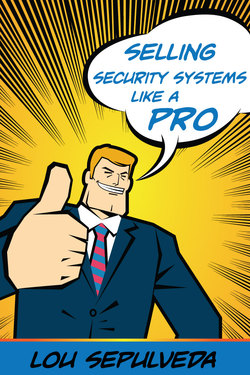Читать книгу Selling Security Systems Like a Pro - Lou Sepulveda - Страница 10
Flyers
ОглавлениеFlyers can be an inexpensive and effective way to target exactly the prospect you believe, or statistics suggest buys your product. I have used flyers to warm up an area I planned to cold-call. That way the prospect isn’t entirely surprised to see me at their door or place of business.
However, like direct mail, only a small percentage of the flyers you hang will actually be read. Some people simply crumble the flyer up and toss it in the trash without paying close attention to what it says or offers. So you have to be creative. Search for designs that are more appealing to your target audience.
I’ve seen flyers that were printed on a heavier card stock paper and were die-cut to fit around the doorknob. That type of flyer is easier to read and appears more important, which brings me to content. As in direct mail, the message on the flyer should be short, easy to read, and attention grabbing. If you have designed a direct mail program that proved more effective than industry statistics suggest, use some of what you said in the direct mail piece on the flyer. In fact, why not combine a flyer program with a direct mail program, assuming you are targeting an area in town?
What I’m going to tell you now, you will find hard to believe. But it worked. We were developing a door-to-door program for a Fortune 50 company. The plan included driving teams of salespeople to a targeted area to knock doors. If someone was home they gave their door presentation in hopes of being invited in. Once in, the closing rate was upwards of 75 percent. The question was what to do when no one was home.
We had two clear choices: move on to the next door and hope we’d catch the people at home on a return visit to the neighborhood, or leave something behind to indicate we were there and hope we’d get a call from the homeowner asking us to come back. It seemed like a waste of energy to leave without leaving something behind, taking even a remote shot at making a sale, so we decided to develop a flyer to leave at the door.
The early choice, considering we were a big company with lots of resources, was to have marketing design a classy door hanger/flyer complete with great artwork, pictures, and professionally written copy in multicolor, all designed to grab attention and promote a response. The resulting door hanger was very nice—even potentially award-winning if we had entered it in a marketing contest—but it didn’t work.
We tracked the number of door hangers we left behind and the response to them, and the results were no better than direct mail: roughly half of 1 percent. And considering that we weren’t knocking on thousands of doors, the percentage return wasn’t worth the investment. So we continued to try other options.
Then one of our trainers stumbled on a method that worked. The trainer was at one of our independent dealers’ locations conducting a training that featured door-knocking as a primary sales method. We had instructed the dealer to order the die-cut door hangers and have them onsite in time for the training. However, when the trainer arrived, the door hangers were not there.
Considering that the trainer had to fly to the city where the training was to be held, and all of the salespeople had cleared their schedules to participate, they decided that the training would go on as planned. As a temporary solution to the missing flyers, the trainer asked the dealer to create a flyer on his computer and print them on his office printer. The result was a simple 8.5 x 11 flyer on standard white paper with standard black print. Because it wasn’t die cut to fit over a knob, the salespeople twisted the paper to wedge it between the knob and the doorjamb. The end result looked like a crumpled note someone had left on the door—totally unprofessional.
The next day, during day two of classroom training, an administrative person told the trainer that they had received several requests to have someone go back to the neighborhood they knocked in yesterday. The prospects found the flyer on their door, read it, and wanted more information. The percentage of callbacks on the makeshift flyers far exceeded the number of callbacks on the professional door hangers.
So the trainer decided they’d do the same thing that evening and use the simple hand-twisted, crumpled flyer for that evening’s door-knocking. Once again they received a higher percentage of calls than normal.
When the trainer told me what happened, and I told marketing, they were not happy. They couldn’t imagine such an amateurish flyer being used in the first place, and that it worked better than their beautifully done, professional work bordered on insulting. From my standpoint—that is, the sales department’s standpoint—I didn’t care that the flyer wasn’t professional and created by marketing. What mattered to me was that it worked. Our goal wasn’t to impress people with what our marketing department could produce; the important factor was getting sales, and further, it was clear that the amateurish flyer delivered better results. We continued to use it from that day forward, and the results continued to be great as compared to any other leave-behind we had previously tried.
Why did the unprofessional flyer work? Our only guess was that it looked like a note someone left for the homeowner instead of an obvious sales flyer.
